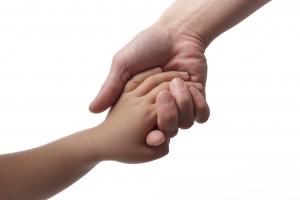SOURCE: Diane Poole Heller (www.dianepooleheller.com)
What’s your Attachment Style? Take the Quiz http://dianepooleheller.com/quiz
Background
My work is influenced by the work and lineage of John Bowlby. Bowlby’s investigation into the intense distress caused in children when separated from their parents led him to define what he called the attachment behavioral system. Later work by Mary Ainsworth made clear distinctions of attachment categories including Secure, avoidant resistant, and avoidant. Contemporary research shows that these early experiences in childhood repeat themselves in adult relationships by how we interact in and what we expect from our significant other.
I frequently refer to the hallmark work on attachment by experts Allan Schore, Dan Siegel, Marion Solomon, David Wallen, Rachel Heller, Amir Levine, Susan Hart, Stan Tatkin, Ellyn Bader, Bessel van der Kolk and Pat Ogden. The current research being done in this field, including my own, has shown great promise in understanding the emotional and neorbiological origins of attachment styles. This understanding, and the revelations of modern brain science on brain plasticity, gives us the exciting opportunity to change destructive relationship patterns in to constructive behaviors that lead to better, deeper and longer lasting adult relationships.
In the DARe workshops we address four of the core Attachment Styles, their origin’s the way they reveal themselves in relationships, and methods for transforming attachment hurt into healing. I use the terms Secure, Avoidant, Ambivalent, and Disorganized Attachment. These are described below.
Secure: Secure attachment is the ideal type of attachment need to enjoy healthy boundaries, fluidity of intimacy and individuation, and social engagement. This is developed by the child having caregivers who are positively attuned to the child, provide a safe haven with consistency and “good enough” care, attention and affection. Children who experience this type of holding environment grow to feel safe to explore the world, interact with others with trust, and to have emotional resilience and regulation. As adults they will tend to have greater confidence, better balance and choices in relationships, and the ability to both give and receive love.
Avoidant: In the avoidant style, caregivers’ emotionally unavailable, insensitive and even hostile responses to a child’s need for connection forms a coping strategy of disconnection in a child. Avoidantly attached people commonly find their greatest struggle to be a lack of emotion. Without intimate nurturance the limbic system is neurologically starved and does not receive the signals required for building social responses nor the frontal brain stimulation that develops bonding.
This disconnection extends first to the parents and then to all other relationships. Though some of our cultural models extol the virtues of this self-reliant lone-wolf behavior (think X man Wolverine, or the quintessential “Desperado” cowboy icon), actually living with such a lack of emotional attunement can be increasingly isolated. When working with Avoidant attachment, the intrepid task of the therapist is to nurture a transition to a fully embodied and participatory existence by creating a welcoming and contactful experience full of compassion “permission for existence.” DARe provide resources for ways Avoidants can cross the tenuous bridge to emotional connection.
Ambivalent: Ambivalently attached people have had caregivers who were on again off again, inconsistently tending and attuning to the child. Because of the lack of consistency the child doubts whether their needs will be met and is on the constant look out for cues and clues to how their behavior may or may not influence the parent’s responses. Over time they find them selves on an emotional see saw of needs being met and not being met. Their object relation is “I can want, but cannot have.”
You may observe that in ambivalent attachment there is a tendency to be chronically dissatisfied. First, there is a tendency to project their own familial history onto their relationship. Secondly if the other person becomes available, they become unavailable! Unaccustomed to receiving love, having it available doesn’t fit their profile of “still wanting”. Over time partners of Ambivalent people can be discouraged by their love being dismissed and the loss of the relationship can be the both the feared and created outcome.
Disorganized Attachment: Disorganized Attachment results when caregivers present double-binding messages to children. This is sometimes called “paradoxical injunction.” An example of this is a, “Come here, go away. Come here, go away.” message. Parents create situations for the child that are unsolvable and un-win-able. For example a parent may ask a child to do a task such as sweep the floor. When the child begins to do so the parent criticizes how it is being done, or even when it is being done. The child may attempt to do the task again taking the direction but is criticized again. The parent may then deride the child for not doing what the parent has asked them to do and punish them for not doing the job.
When exposed to these impossible-to-resolve situations over and over again the child develops a pattern of not solving problems. When parents set up these interactions that are frightening, disorienting, inherently disorganizing, and which sometimes involve violence, the parents become the source of fear. The disorganized pattern arises in the child when there is a desire to be close to the parent as an object of safety conflicting with a drive to detach from a dangerous and confusing caregiver. For the Adult this may mean being held emotionally hostage by the conflict of the desire for intimacy and was well as the fear of it.
To figure out your attachment style, I have provide this short attachment quiz / for you and your partner.
http://dianepooleheller.com/quiz

